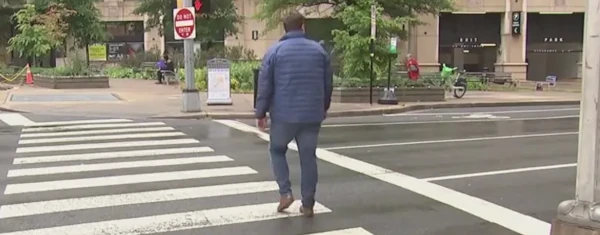 This case involves a collision between a driver and a pedestrian at the intersection of East 3rd Avenue and Cotton Drive in Vancouver. Lily Huang was walking westbound on the north side of East 3rd Avenue crossing Cotton Drive and Dwight Wamboldt was driving eastbound on East 3rd Avenue intending to turn left onto Cotton Drive.
This case involves a collision between a driver and a pedestrian at the intersection of East 3rd Avenue and Cotton Drive in Vancouver. Lily Huang was walking westbound on the north side of East 3rd Avenue crossing Cotton Drive and Dwight Wamboldt was driving eastbound on East 3rd Avenue intending to turn left onto Cotton Drive.
At issue is who had the right of way. Did Ms. Huang walk into the path of Mr. Wamboldt or did Mr. Wamboldt turn left when he should have yielded to Ms. Huang?
Admission of the Driver
Mr. Wamboldt admitted liability for the collision but said that Ms. Huang's behaviour also contributed to the collision and she should be found to be 20% liable for it.
Position of the Pedestrian
Ms. Huang saw Mr. Wamboldt approaching and said that she stepped off the curb when he was still about 15 m away from the intersection. She was about half way across Cotton Drive when Mr. Wamboldt began to turn.
The Court's Decision

Madam Justice Warren's decision on liability rested on her observation that "Central to the positions of each party is the location of the defendants’ vehicle at the moment Ms. Huang stepped off the curb. As I will explain, this is the key fact on which the assessment of Ms. Huang’s conduct rests."
She examines the obligations of a driver turning left at an intersection (Section 174 MVA) and a pedestrian's obligations when stepping off the curb to cross the road (Section 179(2) MVA).
Justice Warren found that Mr. Wamboldt was 100% at fault for the collision as it was practical for him to stop at the time that Ms. Huang stepped into the crosswalk.
Learn More
Share This Article
"Justice Warren found that Mr. Wamboldt was 100% at fault for the collision as it was practical for him to stop at the time that Ms. Huang stepped into the crosswalk." I assume that Justice Warren stated that stopping was practicable for the driver. "Practical" means, in this context, convenient; “practicable” means possible with available means, in this case a motor vehicle. The word “practical” appears no where in the Motor Vehicle Act; “practicable” appears in numerous places.
- Log in to post comments
Yes the judge did use the term "practicable" not the term "practical".
- Log in to post comments
Yes the judge did use the term "practicable" not the term "practical".
The point is, the driver assumed that at this intersection, she would notice him in time to react to her.
The driver admitted he had seen her, but signaled the turn and expected her to pause instead of continuing; there is no suggestion that she was behind his A-pillar, or seen too late.
Both were wrong. Both were assuming, neither was defensive - she was busy chatting on the phone as she walked into his path.
I think this is a 50/50. They're both stupid and presumptive.
- Log in to post comments
- Log in to post comments

Practical vs practicable